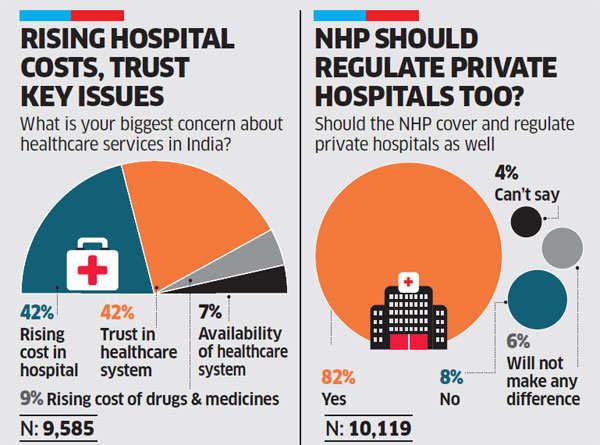
Dr. Madhav Madhusudan Singh is an accomplished healthcare professional with a diverse set of qualifications and specializations. He is the CEO of Level 2 Plus Hospital in United Nation Juba, South Sudan. Dr. Singh holds an MBBS degree from AFMC, MHA from AIIMS, MBA in Finance, and a PhD in Hospital Administration. He is also a certified Green Belt in Six Sigma and a member of ISQUA. Additionally, he serves as the Secretary for RFHHA and is a JCI Internal Auditor. Dr. Singh has expertise in quality and patient safety, KPI management, manpower planning and budgeting, performance management, strategic planning and policy up-gradation, training and employee engagement, BMW management, cost containment, and medico-legal systems.
Healthcare costs in many countries have been steadily rising over the past few decades, putting a significant burden on patients, healthcare providers, and the broader economy. Healthcare spending has been on the rise across the globe in recent years. In 2021, global healthcare spending is estimated to reach $8.6 trillion, an increase of 5% from the previous year. North America and Europe continue to be the largest spenders on healthcare, with the U.S. leading the way. In Asia, healthcare spending is also increasing, particularly in countries like China, India, and Japan. In India as per a survey conducted under National health policy ( NHP ) 2017 , It shows cost is rising exponentially as shown in fig below. As the CEO of a healthcare organization, it is important to understand the factors driving these cost increases and to develop strategies for addressing them.

One major contributor to healthcare cost increases is the development and adoption of new medical technologies and treatments. While these innovations can improve patient outcomes and quality of life, they often come with high price tags that can be difficult for patients and healthcare systems to afford. Another factor is the aging of populations, which can lead to an increased demand for healthcare services, particularly for chronic conditions.
At the same time, there is growing pressure on healthcare organizations to improve efficiency and reduce costs, while maintaining high standards of care. This requires a strategic approach to cost management, with a focus on reducing waste, improving care coordination, and adopting new models of care delivery.
As healthcare CEOs, it is our responsibility to work collaboratively with stakeholders across the industry to find sustainable solutions to rising healthcare costs. By investing in innovation, improving care quality, and implementing cost-effective strategies, we can help to ensure that patients receive the care they need without incurring undue financial burden.
The CEO’s Responsibility in Addressing Healthcare Costs
One of the primary responsibilities of a CEO in healthcare is to address the rising costs of healthcare. Healthcare costs have been rising at an alarming rate, putting a strain on both patients and healthcare providers. The CEO must find ways to reduce costs without sacrificing the quality of care. To achieve this, the CEO must focus on operational efficiencies, reducing waste, and eliminating unnecessary expenses. This requires a comprehensive understanding of the organization’s financials, operational processes, and workflows. The CEO must work closely with other stakeholders to identify areas of improvement and implement solutions.
The CEO’s Relationship with Other Stakeholders
The CEO must work collaboratively with other stakeholders, including physicians, nurses, patients, payers, regulators, and government agencies. Building strong relationships with these stakeholders is crucial to achieving success in healthcare. The CEO must listen to the needs and concerns of each stakeholder and work to find common ground. The CEO must also be a skilled communicator, able to articulate the organization’s vision and strategy to all stakeholders. This requires the ability to listen actively, build consensus, and inspire trust.
How the CEO Can Lead Change in Healthcare
Leading change in healthcare requires a visionary CEO who can identify opportunities for improvement and drive innovation. The CEO must be willing to take calculated risks and challenge the status quo. They must also be able to create a culture of continuous improvement, where innovation and experimentation are encouraged.
To lead change, the CEO must be a strategic thinker, able to develop and execute a plan that aligns with the organization’s mission and vision. This requires the ability to analyze complex data, identify trends, and make informed decisions.
Examples of Successful CEO-led Initiatives
Several CEO-led initiatives have been successful in addressing the challenges facing healthcare. One example is the Cleveland Clinic’s “Patients First” initiative, which focused on improving patient experience and outcomes. Under this initiative, the Cleveland Clinic implemented several changes, including a new electronic health record system, patient-centered care models, and streamlined workflows. As a result, the Cleveland Clinic improved patient satisfaction rates and reduced costs.
Another example is the Mayo Clinic’s “Destination Medical Center” initiative, which aimed to transform Rochester, Minnesota, into a global destination for medical care, research, and innovation. This initiative involved partnerships with public and private stakeholders and focused on creating a sustainable and vibrant community. As a result, the initiative created new jobs, attracted new businesses, and generated significant economic growth.
Strategies for Controlling Healthcare Costs
Healthcare costs continue to rise, placing a significant financial burden on patients and healthcare providers alike. As the leader of a healthcare organization, the CEO plays a critical role in addressing this issue.
Implementing Wellness Programs
Wellness programs can play a crucial role in reducing healthcare costs. These programs encourage patients to adopt healthier lifestyles, leading to fewer chronic illnesses and lower healthcare costs. CEOs can implement wellness programs that promote healthy eating, regular exercise, and stress management. Additionally, offering wellness benefits like gym memberships or fitness classes can incentivize employees to prioritize their health.
Negotiating with Healthcare Providers and Insurers
Negotiating with healthcare providers and insurers can be an effective strategy for reducing healthcare costs. By negotiating lower prices for medical services and medications, healthcare providers can pass on those savings to patients. Similarly, by negotiating with insurers for better reimbursement rates, healthcare providers can improve their bottom line.
Utilizing Technology to Reduce Costs
Technology can play a significant role in reducing healthcare costs. CEOs can invest in technology that streamlines administrative processes, reduces medical errors, and improves communication among healthcare providers. Telemedicine, for example, can help reduce the costs associated with in-person visits, especially for patients who live in rural or remote areas. Additionally, utilizing electronic health records can help prevent duplicate testing and improve care coordination, leading to better patient outcomes and reduced costs.
Developing Alternative Payment Models
Traditional fee-for-service payment models can contribute to rising healthcare costs. As such, developing alternative payment models can be an effective strategy for controlling costs. Value-based care models, for example, incentivize healthcare providers to deliver high-quality care while reducing costs. Under these models, providers are reimbursed based on patient outcomes rather than the number of services provided.
Encouraging Preventive Care
Encouraging preventive care can help reduce healthcare costs by identifying and treating medical conditions early. CEOs can implement programs that encourage patients to undergo regular check-ups and screenings, ensuring that any medical issues are detected early. By investing in preventive care, healthcare providers can reduce the need for more expensive interventions down the line.
Streamlining Administrative Processes
Streamlining administrative processes can help reduce the administrative costs associated with healthcare. CEOs can implement processes that reduce paperwork, automate repetitive tasks, and improve communication among healthcare providers. By streamlining administrative processes, healthcare providers can reduce administrative costs, allowing them to invest more in patient care.
Case study
Case Study: Addressing the Rising Costs of Healthcare
The CEO of a large healthcare organization faced significant challenges in controlling costs. The organization was experiencing an increase in costs due to the rising costs of medical supplies, salaries of healthcare providers, and an increase in the number of uninsured patients. The CEO implemented several cost-containment strategies to address these challenges, which led to a reduction in the organization’s costs.
- Improving Efficiency The CEO identified several areas where the organization could improve its efficiency, such as reducing wait times, improving patient flow, and reducing the number of unnecessary tests. By implementing these changes, the organization was able to reduce costs and improve patient outcomes. The CEO also implemented technology solutions to automate processes, reduce paperwork, and improve efficiency.
- Negotiating with Vendors The CEO negotiated with vendors to reduce the cost of medical supplies, such as medications, medical devices, and equipment. By negotiating with vendors, the organization was able to reduce costs without compromising the quality of care.
- Reducing Staffing Costs The CEO identified staffing costs as a significant contributor to the organization’s rising costs. The CEO implemented several measures to reduce staffing costs, such as reducing overtime, optimizing staffing levels, and implementing flexible scheduling. The CEO also outsourced non-core activities such as billing, coding, and transcription to reduce staffing costs.
Lessons Learned
- Focus on Efficiency Improving efficiency is a key strategy in reducing costs in healthcare organizations. CEOs should focus on optimizing processes, reducing wait times, and eliminating waste to improve efficiency.
- Negotiate with Vendors Negotiating with vendors is a critical strategy in reducing costs. Healthcare organizations should negotiate with vendors to reduce the cost of medical supplies, medications, and equipment.
- Reduce Staffing Costs Staffing costs are a significant contributor to the rising costs of healthcare. CEOs should implement measures to reduce staffing costs, such as optimizing staffing levels, reducing overtime, and outsourcing non-core activities.
Application of Strategies in Different Healthcare Settings
The strategies discussed in this case study can be applied in different healthcare settings, such as hospitals, clinics, and long-term care facilities. Healthcare organizations can implement these strategies to reduce their costs and improve the quality of care. However, the specific implementation of these strategies may vary depending on the healthcare setting and the organization’s specific needs.
Conclusion
The rising costs of healthcare continue to be a significant challenge for healthcare providers and patients. CEOs can implement several strategies to help control healthcare costs, including implementing wellness programs, negotiating with healthcare providers and insurers, utilizing technology to reduce costs, developing alternative payment models, encouraging preventive care, and streamlining administrative processes. By taking a proactive approach to controlling healthcare costs, CEOs can help ensure that healthcare remains affordable and accessible for all.

